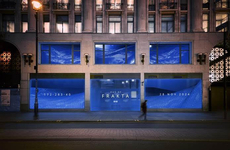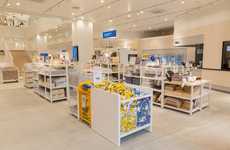
This IKEA Pop-Up in Toronto Challenges Conventional Food Rules
Laura McQuarrie — May 13, 2016 — Marketing
References: ikea
This food-focused IKEA Pop-Up in downtown Toronto is designed to challenge consumers to rethink the way they look at food and break conventional rules with cooking in a fun and affordable way.
The pop-up retail space features a wall of wooden spoons—but these are more than just decorative. These spoons are RFID enabled, giving consumers the chance to tap on displayed products to add them to their shopping list. Inside the store, there are a number of products available for purchase, including everything from household items to IKEA food products. Other highlights of the space include an oversized 3D recipe book and a station to view a virtual IKEA showroom.
Throughout the pop-up space, which will remain open until May 26th, the hashtag #StartFooding is used to carry the conversation online.
The pop-up retail space features a wall of wooden spoons—but these are more than just decorative. These spoons are RFID enabled, giving consumers the chance to tap on displayed products to add them to their shopping list. Inside the store, there are a number of products available for purchase, including everything from household items to IKEA food products. Other highlights of the space include an oversized 3D recipe book and a station to view a virtual IKEA showroom.
Throughout the pop-up space, which will remain open until May 26th, the hashtag #StartFooding is used to carry the conversation online.
Trend Themes
1. Rethinking Food Consumption - Using innovative technology like RFID enabled spoons, there is an opportunity to challenge conventional food rules and encourage consumers to rethink the way they look at food.
2. Interactive Shopping Experiences - Creating pop-up retail spaces with interactive elements, such as tapping on products to add them to a shopping list, can offer a fun and engaging shopping experience for consumers.
3. Virtual Showrooms - Incorporating virtual showrooms into retail spaces allows customers to visualize products and make informed decisions, providing an opportunity for disruptive innovation.
Industry Implications
1. Food and Beverage - Incorporating technology and interactive elements into the food and beverage industry can revolutionize the way consumers shop for and interact with food products.
2. Retail - Implementing innovative pop-up retail spaces with interactive features can disrupt the traditional retail industry by creating unique and engaging shopping experiences.
3. Home Furnishing - Integrating virtual showrooms into the home furnishing industry can transform the way customers explore and visualize furniture and decor, presenting disruptive opportunities.
6.5
Score
Popularity
Activity
Freshness























